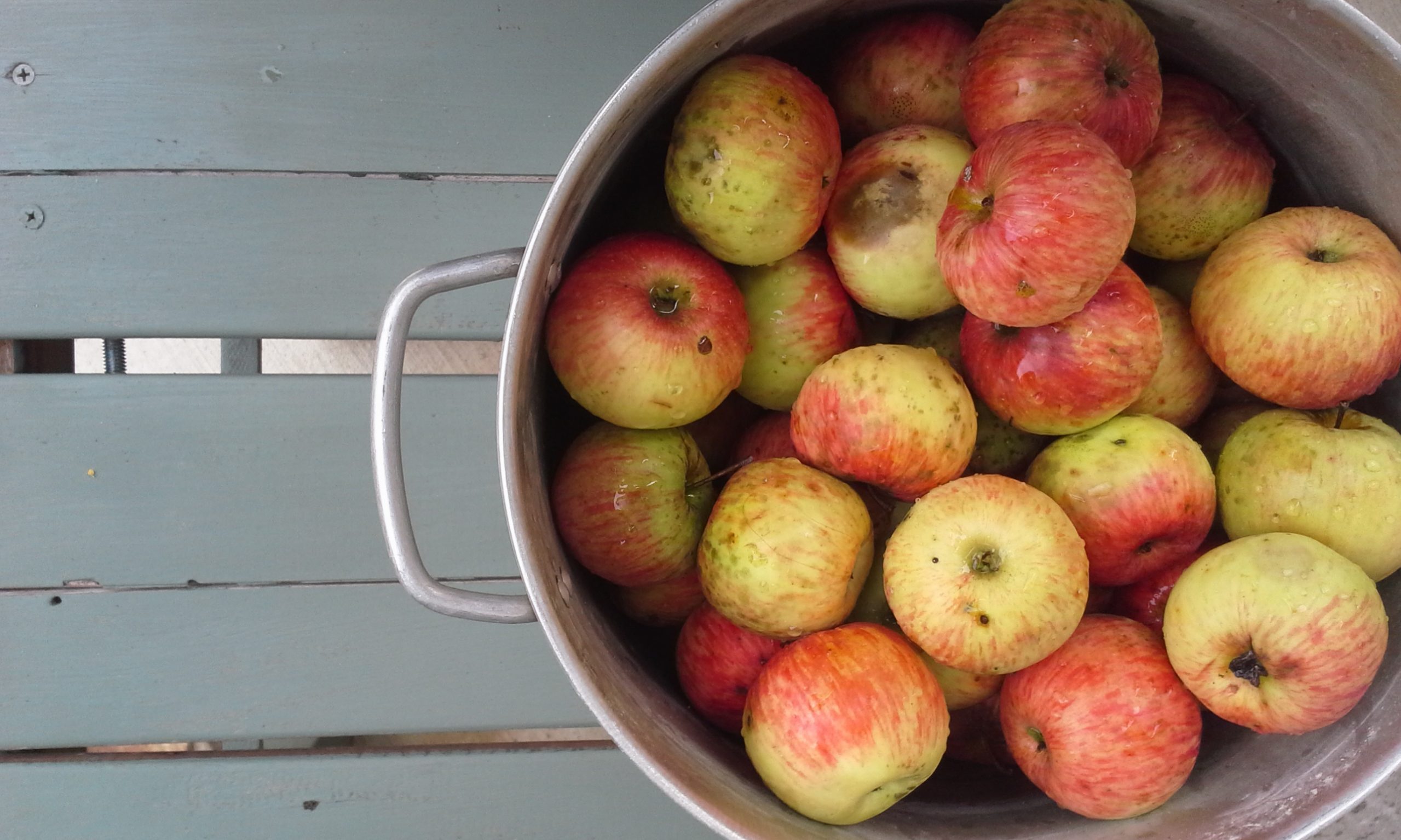
How To Make Apple Cider Vinegar
I can’t help it.
I’m obsessed with homegrown delicious tasting food, and DIY everything.
Partly because I’m a country girl at heart – I grew up snapping greens and chasing cows.
The other reason is because I like feeling good. Eating good made makes me feel good – it’s that simple.
There are so many delicious, real foods in the summer and fall seasons. Recently I had a bountiful supply of apples and I made several apple crisps (and stored them in the freezer to pull out later and bake – so easy!), plus a batch of apple cider vinegar with the scraps. Yep, peels, cores, and apples are the best for making apple cider vinegar.
If you head to Whole Foods or buy raw apple cider vinegar online, it will probably cost you about $5/quart. You can make four times that much yourself – with less cost – if you use apple scraps that you were going to toss out or send to the compost pile anyway!
In this blog, learn how to make your own apple cider vinegar because it will save you money and be one of the healthiest additions to your pantry.
What’s So Good About Apple Cider Vinegar?
From detoxing, to hair treatments, to cleaning products, and immune system boosting tonics – apple cider vinegar sure does make its way around the house of a hippy homemaker and the health-conscious type.
Vinegar is made in two steps. First, exposing apples to yeast, which ferments the sugar and turns them into alcohol. Second, bacteria are added to the alcohol solution which continues to ferment the alcohol and turn it into acetic acid – the main compound in vinegar.
Possible Uses:
- Replace toxic cleaning products – research shows antimicrobial activity for cleaning and disinfecting.
- Soothe digestive issues
- Skin irritations and balance skin pH
- Fruit and veggie wash
- Hair rinse to balance scalp pH levels
- Neutralize odors
Choose Your Vinegar Wisely
White vinegar is fine for cleaning and laundry. The sparking clear varieties of pasteurized apple cider vinegar you see at the store are less rich than the murky-looking unfiltered, unprocessed raw apple cider vinegar that appears to have a cobweb-like substance floating in it. This is the “mother” of beneficial bacteria, and indicates good quality! For health purposes you’ll want raw apple cider vinegar, which has valuable probiotics and enzymes that are often destroyed when heated. Keep it raw for maximum benefits.
Homemade Apple Cider Vinegar
Are you more a visual learner? Click play for this short how-to video, and then see detailed instructions below.
What You Need:
- Peels, cores, and apple slices
- filtered water
- Organic sugar or raw honey
- Quart size mason jars
- Cheesecloth
Ratio: Mix 1 cup organic sugar or raw honey into 1 cup water and stir to dissolve. You’ll use 1/2 cup of this solution per quart jar.
- Place apple peels and scraps in a sterile container like a fermentation crock or glass jar.
- Pour ½ cup of sugar-water solution over the peels, which should be loosely packed into the container. Fill the rest of the jar with filtered water to cover the apples/peels.
- Use a clean weight (which can be a glass jar or dish) to keep peels submerged in the liquid.
- Cover the vessel with a clean, breathable cloth secured with a rubber-band to keep bugs out.
- Leave the container at room temperature to ferment for about 2 weeks.
- After 2 weeks, strain the scraps from the vinegar, and funnel the vinegar into a new clean jar.
- Store sealed vinegar in a cool, dark place. After 2 more weeks the vinegar should be ready to use.
Use your homemade apple cider vinegar on salads, in dressings and marinades, for cleaning, and more.
 Previous Post
Previous Post Next Post
Next Post



Don’t you have to worry about the chemicals and pesticides in the apple peels? Will vigorous washing really get rid of the toxins?
I would choose organic apples Karen! Mine were homegrown and not sprayed with chemicals.
thanks, Jen.
I’m looking forward to trying this.
Terri – I can’t wait to hear how it goes!
Wouldn’t the apples have enough sugar for the fermentation process? I am eliminating sugar from my diet.
Hi Deb – I don’t eat refined sugars either. The sugar in making apple cider vinegar simply feeds the fermentation process. Consuming apple cider vinegar is not the same as eating sugar because it changes along the way, even though sugar was part of the original brewing recipe. I don’t know if the apples have enough sugar to ferment on their own.